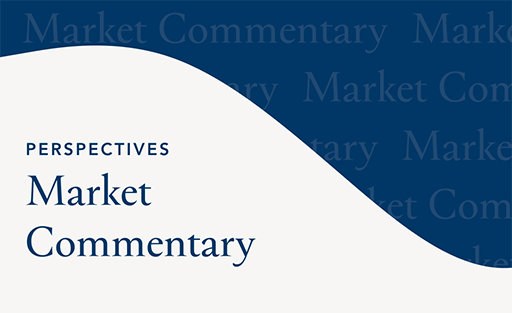Quarterly Insights: October 2025
As the adage goes: history doesn’t repeat itself, but it often rhymes.
Even believers in the transformative power of artificial intelligence have begun worrying about a brewing bubble. Our former partner Terry Price wrote about similar market conditions in the Spring of 2000—those of extreme market concentration, skyrocketing technology valuations, a disregard for risk, and FOMO (the fear of missing out). And as many of us remember all too well, those circumstances culminated in a generational market correction and wave of bankruptcies.
From Terry: “Some investors wonder if they are the only ones not participating in the dot-com IPO foolishness.” “In today’s market environment, indices such as the Standard & Poor’s 500 and the NASDAQ Composite are being disproportionately driven by an ever-narrowing handful of stocks predominantly composed of internet-related tech stocks plus the very largest publicly traded companies.”
After contrasting the outperformance of technology stocks against other sectors, Terry also wrote (cheekily): “But everyone knows the current technological boom is the holy grail for which investors have searched a lifetime. Technology is changing the world, and things will never be the same.” He continues: “Wouldn’t it be wise to invest in this area? Of course the answer is yes. But without a method to properly evaluate investment opportunities, foolish and costly decisions are the likely outcome.”
We feel similarly about today’s AI boom. We have staked much of our clients’ success on investing in innovation, but we’ve done so with a resolute focus on business fundamentals and by being devoted students of market history.
That history tells us that shifts in how we live and conduct business follow the technology hype cycle: initial excitement in an emerging technology leads to heavy investment (and inflated expectations), then disappointment and, eventually, a recovery. Automobiles are an especially prescient example of the hype cycle in action. In the early 1900s, the idea of the automobile was very exciting, built around the internal combustion engine. Nearly 500 companies entered the automobile business between 1900 and 1908. Of those, more than half disappeared by 1908, and then only three remained at the turn of the next century (Ford, General Motors, and Chrysler) who themselves continue to cede ground to younger competitors.
Today, ambitious upstarts and deep-pocketed incumbents are spending furiously on advanced chips and data centers with yet-to-be-defined business cases. The staggering investment figures (some sources point to over $4 trillion in cumulative investment and R&D by 2029!) reflect what we would characterize as a prisoner’s dilemma: technology executives are throwing money at AI—and risking insolvency, in some cases—to avoid the possibility of being left behind as their peers blaze into the future.
As we’ve written before, AI’s potential is exciting, and we would never doubt mankind’s incredible drive to innovate. But it’s a fool’s errand to try to anoint the long-term winners so quickly. New technology takes unexpected twists and turns. Looking at recent history, who expected the iPhone to make Blackberry and Nokia obsolete? Facebook to supplant MySpace? Zoom to replace Skype?
History teaches us that identifying a trend is far easier than predicting its winners. It also tells us that the eventual winners are often the more patient entrants who benefit from second-mover advantage—that is, learning from the pioneers’ mistakes and exploratory R&D expenses to then craft winning strategies.
Today, OpenAI has a strong brand position from being an early mover, brilliant storyteller, and willing spender. But we believe predictive AI models risk becoming commoditized if they fail to establish product differentiation. OpenAI’s ChatGPT and associated products are far from turning a profit and may have a difficult time doing so with the onslaught of competition. Further, the game-changing productivity improvements they’ve promised have so far proven elusive for many of their customers.
In 2000, we posed the question: “So, how does a wise investor search for and benefit from the holy grail of technology?” Our answer then is the same as it is today: “We concentrate our research on companies offering the greatest opportunity for real growth in cash flow and consistent earnings. We focus on companies with the following characteristics: superior management; strong financial condition; inflation-adjusted growth of cash flow, unit sales, earnings and dividends; strong competitive position in a growing industry.” In short, we will continue to put your capital to work in businesses with tangible advantages rather than follow the herd into speculative trades, however alluring they may sound. Our approach proved successful in navigating and emerging from the bursting of the dot-com bubble, and we believe it will continue to serve our clients well in the years ahead.
The above information is for educational purposes and should not be considered a recommendation or investment advice. Investing in securities can result in loss of capital. Past performance is no guarantee of future performance.



